

See Galaxy Explorers in Action!
Meet the Galaxy Explorers!

Derek Neyer, Castro Valley High School

Megan Ma, Oakland Technical High School

Sage Hirsch, Berkeley High School

Zoe Gibbs, Head-Royce School

Itzel Zavala, Skyline High School

This website is published by the Galaxy Explorer (GE) Media Team at Chabot Space & Science Center in hopes to engage visitors and volunteers in current science discussions as well as provide information about the events and projects involving the Galaxy Explorers.
The GE program provides high school volunteers a way to engage in science by presenting hands-on experiments and activities to enhance the visitor experience. The activities, ranging from determining the pH of dry ice to understanding constellations to creating a spectroscope allow visitors of all ages to learn something new. GEs also contribute to special events at Chabot, such as the Balloon Drop on New Year’s Eve and eclipses.

In addition to ensuring the visitor experience is the best possible, GEs also join enrichment teams to further their science-related interests. Current teams include Programming Team, Astronomy Team, Environment Team, Chemistry Team, Cadet Team, Creative Design Team, Rocketry Team, and Media Team.

There was a lot at stake for the gay men who used the language of Polari in the early 20th century. Homosexuality was against the law. Being outed was often a matter of life and death. However, using slang, borrowed words, and foreign languages, the LGBT+ community created a “secret language” in order to communicate with each other safely, and Polari was born.
Definitions
How bona to vada your dolly old eek! But before we start talking about Polari, let’s lay down some definitions.
First: language is defined as “the words, their pronunciation, and the methods of combining them used and understood by a community” (Merriam-Webster).
Second is slang, which can be defined as “an informal nonstandard vocabulary composed typically of coinages, arbitrarily changed words, and extravagant, forced, or facetious figures of speech.”
The classification of Polari is difficult; it’s more than slang, but not quite a full language. For instance, one can have a conversation in Polari but one can’t write a book in it. For this reason, some would classify it as– third– a pidgin language, which is “a simplified speech used for communication between people with different languages”. And yet, Polari was used between English speakers in Britain.
This brings us to the reason Polari was created in the first place. It was used by gay men in Great Britain from roughly 1910-1960 so they could talk openly about being gay when homosexuality was considered a crime.
Fourth and finally, one proper term for Polari is “argot”, which is a “language used by a particular type or group of people : an often more or less secret vocabulary and idiom peculiar to a particular group.”
To put it more succinctly: Polari was a secret language.
Etymology
Many Polari words act as “code words” and have one-to-one translations in English, while others carry completely different connotations or represent previously unnamed concepts. Typically, the Polari user would drop in a Polari word or phrase in casual conversation in order to test for reactions from the listener– it was a subtle way of identifying fellow gay men– and full conversations in Polari also flourished. With Polari, gay men could speak openly in public and avoid suspicion.
Due to Polari’s hodgepodge of origins, the language is composed of many inventions and borrowed words. One example is the word “vada”, meaning “to see”, which comes from the Italian word for “to see”: vardare. In a sentence, “could I vada that?” means “could I see that?”, and “I vada-ed them yesterday” means “I saw them yesterday”.
“Riah” is another Polari word that comes from an established language. This Polari word for “hair” is simply the English word for “hair” spelled backward. Plays on English words were common; “fabulous” became “fantabulosa” in Polari, and “eyes” were “ogles”. However, still other Polari words were total slang inventions- like “lallies” to mean “legs”.
These individual words can be strung together to create a full Polari phrase. One such phrase goes: “How bona to vada your dolly old eek!” In English: “How good to see your dear old face!” This phrase combines words like “bona” and “vada”, clear latinate foreign-language root influence, with invented slang like “dolly” and “eek”. This well-cited phrase is quintessential Polari.
In 2020, the writer Daniel Villarreal used Polari words to piece together inventive sentences as they would have been said in the early 20th century. One such sentence reads: “Everyone thinks that auntie is a total fruit, but her gildy clobber makes me think she’s a duchess”, which Villarreal has translated to mean: “Everyone thinks that older gay man is a total old queen, but his nice clothes make me think he’s a rich gay man.”
Some Polari words have made it into modern English lexicon, especially of the LGBTQ+ community. For instance, “camp” and “butch” are two common descriptors in modern parlance (Polari words that respectively mean exaggerated in affectation; masculine in nature). Although Polari is now little-used as a functional “secret language”, its influence on pop culture and place in history is self-evident.
Early History
Though Polari was mostly spoken in the 1900s its history starts much earlier in the 1500s with the Argot of Cant. Cant was spoken by those in the underbelly of Britain. You could hear it on the tongues of thieves, vagabonds and smugglers but also from marganalized groups like the Romani and the Queer Community.
A century later in the 1600s traveling carnivals from Italy started to make appearances in Britain. With them came the pidgin language of Parlyaree and the two languages began to mix.
Later in the 1800s, Cockney Rhyming Slang became popular with the English poor. Yet another language, in addition to words from other languages like Romani, Yiddish, and French were added to the Cant-Parlyaree soup and Polari was born.
However, it did not become synonyms with the Queer Community until the 1910s-1920s. Until this time it was spoken by the entire British underbelly, much like Cant before it. No one is quite sure how Polari became the language of homosexuals. However, many theorize that it was because it was used so often by Drag Queens that the switch happened.
Decline and Legacy
Polari eventually fell into disuse in the later 60’s and 70’s due to changing tastes, dwindling secrecy, and the decriminalization of homosexuality. Many younger members of the gay community began to reject the “camp stereotypes and casual sexism” prevalent in Polari. Polari insults often feminized the subject in order to be derogatory– for instance, the police were referred to as “orderly daughters”. The moral objectors were joined by others who abandoned Polari because of the lack of secrecy. British comedian Kenneth Williams featured two Polari-speaking characters in his popular 60’s radio series, Round the Horne.
Previously, Polari users were so secretive that the language was hardly shared and certainly never spoken on tape; then, it had become public knowledge. But perhaps most crucially, the decriminalization of homosexuality meant that Polari’s original purpose was moot. The language had sprung from persecution and the need for secrecy. The passage of the 1967 Sexual Offenses Act was a legislative and cultural turning point that hastened Polari on its slow decline.
Polari never fully took root in America but a few words such as butch, fish, camp, and zhoozh transferred from Britain to America and have remained in the vernacular of the LGBT community.
Source Cited

Astronomy Team is back at it with episode 3 of their extraterrestrial life series! The team discusses the potential for life on Venus, Jupiter’s moon, Europa, and Mars!
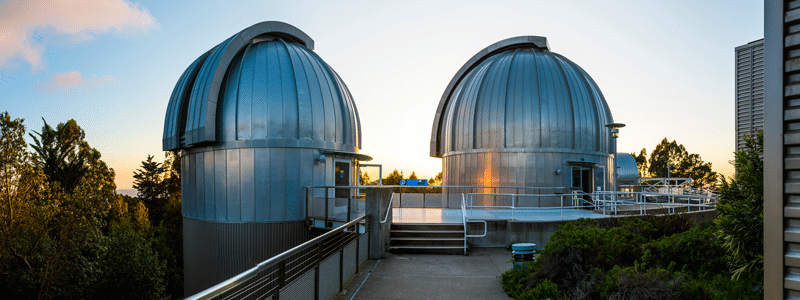
Meet the creators of the Life On Other Planets video series! Lily, Sierra, Phoebe and Sonia share their thoughts on making videos, hobbies, and the Galaxy Explorers program.
What inspired you to create this video series?
Sonia: I’ve been interested in space since middle school and when I learned about the probably infinite status of the universe, the existence of extraterrestrial life has seemed possible and probable. Most people think of aliens as something supernatural and almost impossible but it is basically the opposite. I wanted to learn more about extraterrestrial life and share our findings.
Sierra: Originally, we were planning to make a video series on Black Holes, but then we attended an UP Workshop (one of the enrichment activities Chabot provides for GEs) about Phosphine and possible life on Venus. It was incredibly interesting and engaging and we thought that other people in our community and beyond would enjoy learning more about extraterrestrial life as much as we did!
What is a challenge you faced while making the videos, and how did you overcome it?
Sonia: One challenge that we had was finding the appropriate level of content. The search for extraterrestrial life has a lot of technical aspects that we could go very far into so we had to decide what parts to mention and what parts to not. We needed to make sure our videos were digestible but still interesting to our desired audience (middle schoolers.)
Sierra: There’s so much information out there about space-science and the search for extraterrestrial life. It can be sort of overwhelming at times! We had to think about the important aspects we wanted to talk about, and then figure out how we were going to split that information up.
What are your future video ideas?
Lily: We are currently working on a video on what we have seen so far and have two more lined up: theories on why we have not made contact with aliens and habitable planets that we know of.
What do you like to do outside of Chabot?
Lily: I play marimba in my school’s percussion group.
Phoebe: I play tennis, read, watch TV and movies, and volunteer for an organization called ENGin.
Sonia: I enjoy photography, hiking, and drama tech at my school!
Sierra: I’m a part of my school’s cross country and track team, and I go backpacking with my family about once a year.
What motivated you to explore STEM?
Phoebe: I liked programming and computer science classes in school, so that got me into the STEM field in the first place. I also looked into STEM opportunities due to interest in after school activities such as internships and volunteering.
Lily: My brother has always been super into biology, so we spent a lot of time together watching documentaries and doing activities like birding which got me more into STEM too.
Sonia: I’ve been interested in science since middle school because I love finding out how things work, specifically on an atomic level. All these cool things are hiding in our everyday activities and I want to learn as much about it as I can. Learning about the large large scale also interests me because it’s like we’re the cool things happening on the much smaller level!
Sierra: When I was little I would always imagine myself as an astronaut when I got older, so that’s just motivated me to explore STEM fields. I’m still holding out that maybe I’ll get to work in space-science, but as I learn more about different STEM subjects I realize that there’s so much more out there to explore!
What is your favorite aspect of the Galaxy Explorers program?
Phoebe: My favorite part of the GE program is in-person demos. It feels rewarding to be actively teaching my community and helping kids become more interested in science.
Sonia: I’ve only experienced the GE program on zoom so far but I’ve really enjoyed the speakers! They’re incredibly knowledgeable and I love getting deep into a subject with an expert! I hope I’ll be able to take part in-person next year and I’m really excited to teach kids and hopefully spark the same interest that great teachers have sparked in me!
Lily: I’ve also only been a GE over Zoom, but I love the chance to meet new people, and I also really enjoy all of the guest speaker workshops!
How has the Galaxy Explorer program changed since quarantine? How have you adapted to these new circumstances?
Lily: I joined Chabot when we were already quarantined, so I’m just excited to see what happens when I get to go to the museum in the future!
Phoebe: Before quarantine a majority of the program was about in person demonstrations to visitors, but now we focus our time on online Special Teams meetings and UP Workshops. To adapt to these changes, I have learned to organize my time better to make sure I don’t forget about online meetings and set aside time for research as well.
Sierra: Before quarantine, I only did the Museum Floor shifts, so in a way there have been some positive (?) aspects to being stuck at home. I’m so glad that I’ve started going to UP Workshops and am participating in Astro Team this year. I’ve definitely had to work on my time management skills as well, but in the end it’s worth it and I’m looking forward to when we’re able to safely meet in person again.
What advice can you give to kids or people who want to learn during quarantine?
Phoebe: Virtual tours of museums are great because you could “visit” a museum that is normally inaccessible to you and these tours can be really interesting. Watching documentaries is my favorite way to learn because not only are they informative, but also quite enjoyable.
Sonia: I can get a little distracted sometimes so what I’ve been doing is watching videos on youtube of pretty niche subjects while crocheting or embroidering to combine two interests! it can be a lot of fun and it feels good to learn!
Check out some of their videos!
https://chabotspacetimes.com/2020/12/05/life-on-other-planets/
https://chabotspacetimes.com/2021/01/31/life-on-other-planets-2/

Interviewed by Banoo Afkhami
Mx. Sidney Woodruff is a queer Black ecologist and UC Davis PhD student studying reptile and amphibian conservation in Yosemite National Park. Mx. Woodruff says that the unique challenges that queer and Black youth face make it difficult to break into STEM, which led her to join the MUSE Mentorship and guide students in the field.

Join Astronomy Team on PART TWO of their series on extraterrestrial life. In this episode, the team covers rovers, telescopes, and careers in space science– oh my!

Watch and learn as Astronomy Team Galaxy Explorers describe the potential for extraterrestrial life– and how scientists are looking for it.
Watch Galaxy Explorers explain the science behind your kit activities! Check out the links below each video for the worksheet and more information.
Watch Chabot Space and Science Center’s Galaxy Explorer Chemistry Team put together a giant periodic table!
Thomas Lee, resident Chemistry Team GE, explains the chemistry of green tea!

Watch Galaxy Explorer Seth Weinstein from Chemistry Team explain the different states of matter and their transitions!
There are four states of matter: solid, liquid, gas, and plasma. Each is made of the same particles, but arranged differently. These differences in arrangement lead to very different properties.
Watch Chabot Space and Science Center’s Galaxy Explorers on Chemistry Team tell you about their project to turn used cooking oil into usable biodiesel, as well as their thoughts on chemistry team’s year!

It’s no secret that policymakers discriminate against disadvantaged communities. In 1982, North Carolina needed a location for toxic waste-in particular, polychlorinated biphenyls (PCB)-contaminated soil from highways. As a result, legislators settled on dumping the soil in a landfill right in the vicinity of a predominantly African-American neighborhood in Warren County. Following this, protests sprung up. Not only in Warren County, but across America. Though there have been other protests before the ones in response to Warren County, no other one has ever been enacted on such a large scale. This event is widely understood to be the catalyst for the Environmental Justice Movement.
Since then, the movement has stayed alive. But why is this enthusiasm for change important, especially now? While it’s true that reversing the trend of rising climates is necessary in order to slow the melting of ice caps and preserve biodiversity. And, of course, we need to notify decision-makers that switching to renewable energy not only mitigates greenhouse gas emissions but saves money. But I would argue that perhaps the most important reason for change is humanity. What the Warren County protests have shown, disadvantaged communities are disproportionately affected by the lack of environmental regulations. During the era of COVID-19, the disparity between white communities and people of color has never been as evident. Those at the highest risk for contracting COVID-19 are people of color. Why? The average median income of people of color is significantly lower than their white counterparts. As a result, a higher number of people of color cannot afford to stop their work, which involves interacting with the community, without the opportunity to work from home. Furthermore, a higher percentage of people of color are suffering from the economic crisis that COVID-19 has imposed. In fact, the employment change in Asian American communities is the most significant, with a -15% employment change, followed by -14% employment change in black persons of color, and a -13% employment change in Hispanic/Latino populations. The employment change in white communities is the least severe, at -9% (U.S. Bureau of Labor Statistics, 2020).
It doesn’t stop there. In his lecture, Facing the Challenges of Health Policy & Economics during the COVID-19 Pandemic, Professor Timothy McBride, an economics professor of Brown School of Social Work at Washington University in St. Louis, considered that unemployment has a greater impact than a loss in income: it also means a loss in insurance coverage. In fact, among the 10 states with lowest levels of insurance, Texas, Florida, Georgia, Mississippi, Nevada, South Carolina, and Alabama also are among the top 10 states with the highest rate of increase in COVID-19 cases (FamiliesUSA, 2020). Clearly, there has not been a time where proper insurance coverage was as crucial.
So where does the environment come in? It has long been known that communities consisting of a high amount of people of color are often confined in areas with higher rates of pollution. In fact, African Americans with a median income of 50 to 60 thousand dollars per year still experience a higher amount of pollution as compared to white communities living in abject poverty (under 10 thousand dollars in revenue per year) (Nature, 2020). As a result, African American women are 20% more likely to have asthma (as someone once told me, the phrase, “I can’t breathe,” directly reflects this statistic). COVID-19 is a disease that has been shown to target our respiratory systems; it follows that a higher proportion of African American individuals suffer a higher death rate from the pandemic than their white counterparts. During the pandemic, the effects of environmental racism have become more noticeable than ever before.
So, keep fighting for our environment. It’s a crucial step toward ending injustices in our community. When you look closely, lives depend on it.
The Uninhabitable Earth, by David Wallace-Wells, provides a sobering look at the impacts of climate change, both in the near and distant future. Beginning with consideration of the large-scale impacts of warming, he then addresses each major aspect of climate change in turn, from rising sea levels to extreme heat and wildfires. Finally, Wallace-Wells considers the impacts of politics, economics, and technology on climate change, and vice versa. Through the use of statistics and details, Wallace-Wells compellingly argues that climate change is a much more important problem than most consider it to be, but humanity still has a chance if we take immediate, large-scale action.
Wallace-Wells’ focus on feedback loops is particularly fascinating. In the first section, “Cascades,” he articulates well the additive effects of each element of climate change: for example, melting ice caps cause sea level rise, but they also release methane, a greenhouse gas more potent than CO2, increase the earth’s albedo (causing the planet to absorb more heat), and may even unfreeze long-dormant viruses, potentially compounding other issues with a global-warming-induced epidemic. Wallace-Wells’ skilful description of the feedback loops at play makes his urgency all that more compelling. Drawing upon climate models from two degrees of warming all the way up to eight degrees, Wallace-Wells uses the effects of these loops to paint a brief picture of the world at each outcome. With only two degrees, “the ice sheets will begin their collapse, 400 million more people will suffer from water scarcity, major cities in the equatorial band of the planet will become unlivable, and even in the northern latitudes, heat waves will kill thousands each summer.” The world of eight degrees is far scarier: heat alone would make about a third of the planet uninhabitable. The world today has already seen an increase of about one degree, and we already suffer its consequences, though these consequences play out differently across the globe.
Wallace-Wells also takes an in-depth look at each major factor contributing to climate change. Each chapter tackles one aspect, from more commonly understood issues like sea level rise to rarely-considered problems like a surge in global conflict. For each problem, Wallace-Wells provides statistics from the past, present, and future, detailing the catastrophic collapse that could occur if climate change were allowed to run unchecked. In each chapter, Wallace-Wells constantly references the cost, both in dollars and human lives, of each issue alone. California readers may find the chapter on wildfires particularly interesting—California’s wildfires occupy a special focus in this chapter.
As he poses these terrifying statistics and dark visions for the future, the author considers the balance between education and climate alarmism. Wallace-Wells argues that the fear of climate alarmism has prevented scientists from clearly communicating the immediacy of the situation, leading to large-scale, dangerous complacency. He understands, however, that an overwhelming sense of the immensity of the issue could breed “climate fatalism,” a hopelessness about the possibility of preventing climate change that lends itself to apathy. Alongside his rather alarming statistics, Wallace-Wells focuses on the importance of human action. Scientists can create climate models for different scenarios of warming, but humanity as a whole has the power to change the outcome. From technological innovation to political policies, humanity still has the opportunity to act to ensure ourselves a future.

In the year 2020, reading the news, turning on the television, or even just opening up social media can make one feel as though the world could end any second. Sitting in our homes and consuming media, we are removed yet in the midst of the suffering and death caused by COVID-19. No matter how much we pride ourselves on our ability to shape the environment around us, the pandemic is an overdue reminder that we coexist with nature and are still behest to our environment.
Amitav Ghosh’s short non-fiction work, The Great Derangement, addresses the systems in place which propagate the perceived separation between humanity and nature by examining a different environmental issue: climate change, specifically the rise of sudden, deadly natural disasters due to the increasing global temperature. However, Ghosh’s work is not entirely scientific. Instead, it seeks to put the lens of climate change upon different aspects of humanity, specifically literature, history, and politics, to analyze the flaws within our system that define our relationship with nature. Faced with a similar force of nature today in COVID-19, applying Ghosh’s philosophy to a pre-COVID-19 society provides philosophical guidance to reexamining our relationship with the environment.
The portion of the book especially relevant to COVID-19 critiques the portrayal of nature throughout the history of media, especially novels. Though literature may seem irrelevant today, novels tend to explore the human experience, and as a result have a massive effect on readers’ philosophy. This is applicable not only to novels, but to all consumable media, from movies to TV shows to even the news. Ghosh claims that the media sets its tales too narrow, only focusing on an “individual moral adventure.” This has the effect of removing nature from the narrative.
When we see a character driving a convertible with the wind in their hair, obviously enjoying a moment of freedom from the mundane, we don’t question how the character is able to afford the convertible or whether it’s economical for the character to be driving alone. We focus on the character’s emotions, or their individual journey. Our culture isn’t trained to immediately latch onto the environmental consequences of what we see. Instead, we latch onto the meaning behind the symbol of the convertible, the green lawn, the massive house, and ignore the consequences which these objects have in real life. Due to this lack of realistic environmental representation in our daily life, we are separated from the environment which we live in. We are repelled by forces which aren’t borne from humans, because we cannot necessarily control them.
COVID-19 is especially emblematic of this relationship between humans and the environment which we consider to be separate from us. The twenty-first century has created a perfect storm for a disastrous pandemic: a large global population, massive metropolitan areas, and the same globalization which led to the cultural and economic interconnectedness we share today. Aside from the physical aspects of our world which make us vulnerable to viruses, there’s also the cultural aspect which Ghosh emphasizes deeply. We are scared of what we cannot control, so we disregard it. We forget about Ebola and SARS, and continue to slash funding from public health programs. Finally, there’s also a significant historical and political aspect to crises which arise from natural causes which cannot be ignored. When we look back at 2020, experts will attempt to piece together the cause and effects of the virus, of what could have been done to curb the pandemic, of whose “fault” it was. It is integral to the records of human history that we put a historical lens on COVID-19 while it is still happening, for otherwise we will never learn from the various flaws in the system revealed by the pandemic.
In the end, that is truly the most important end goal of putting a humanities lens on a scientific phenomenon. How can we improve our systems and culture? How can we make it so that when the next pandemic arrives, we don’t fall into the same chaos? When shelter-in-place regulations are relaxed, how can we improve our relationship with the environment? As of right now, it is too soon to tell what the world will look like when the pandemic ends. However, I have hope that the realization that we are not separate from nature will encourage people to look past the restrictions and symbols of the past. Hopefully, the effects of the pandemic will remind the world’s population to become more environmentally conscious and distance ourselves from a culture which separates us from nature. Maybe one day, people will look upon environmentally detrimental actions like taking baths or not composting with just as much aversion as they do upon not wearing a face mask outdoors today. While the COVID-19 pandemic will have an enormous toll on our society, it is also a chance to create our culture and systems anew, this time with a focus on what’s really important: our relationship with the environment which we are a part of.

In part ten, we show how functions can be used to reuse code for many different purposes.

In part 9, we introduce variables and show how they can be used along with mathematical operations.
In part eight, we introduce the sensing tab and show how it can be used along with loops and if statements.
In part seven, we introduce the concept of if and else statements and how they can be used to make complex programs.
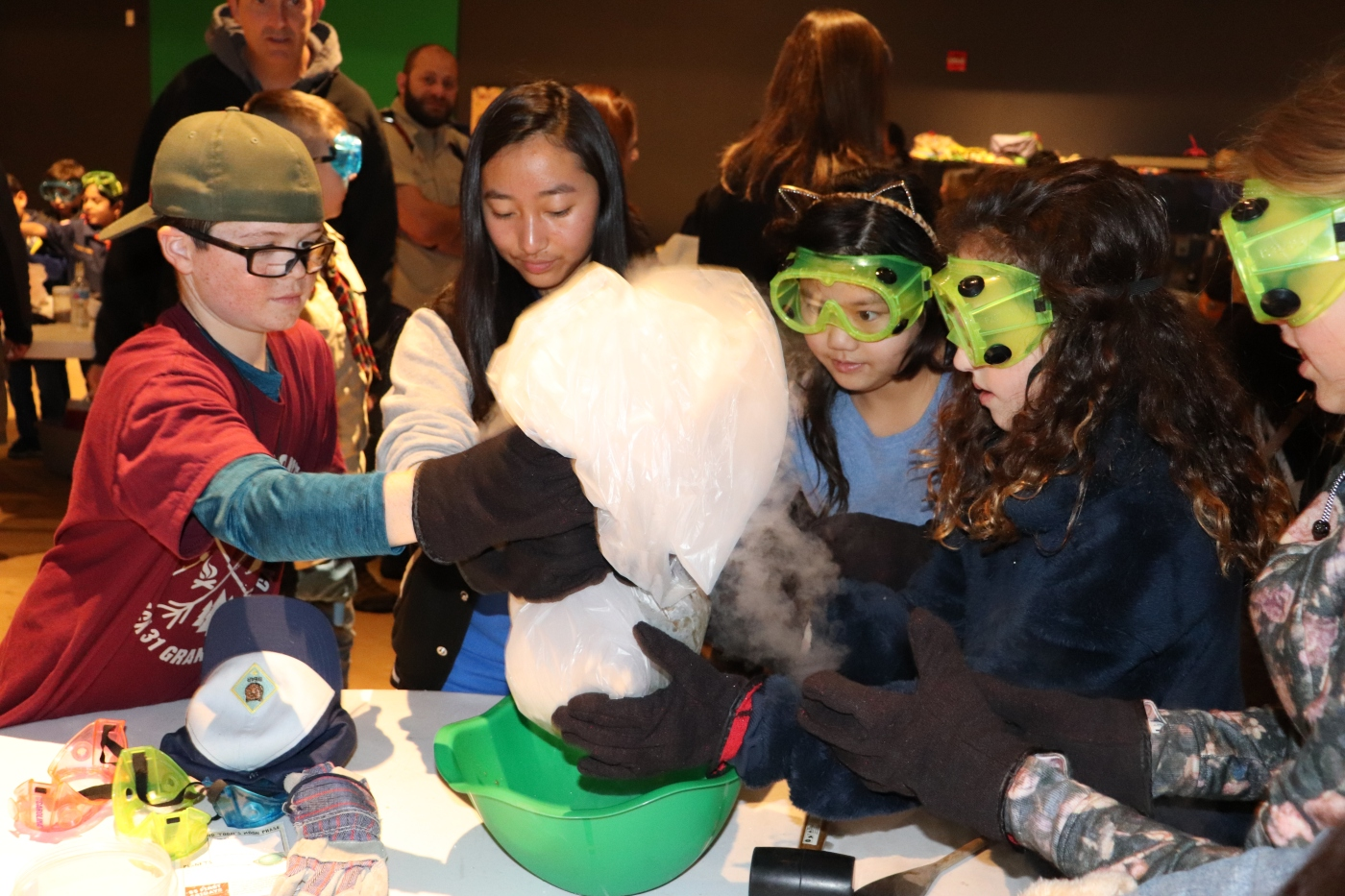
The Overnight is a special event that invites boy scouts and girl scouts from around the state to earn their astronomy badge. Throughout the night, they participate in various fun activities such as making dry ice comets, doing a scavenger hunt, and watching planetarium shows.
Project Create has been a part of Chabot since 2016. Once called Maker Space, the exhibit has recently undergone an impressive makeover, multiplying the number of activities offered. After four months of remodeling the area to better suit the new exhibit, Project Create now offers a wide variety of innovative and interactive stations for visitors to test their creativity while developing their scientific minds.
Along with the resident stations of Stop Motion Creations, Marble Machine, Kapla Blocks, and many others, the Workshop offers a unique project every few months. From building an LED Lego city to creating a pegboard pinball machine, kids experience various engineering challenges at this station.
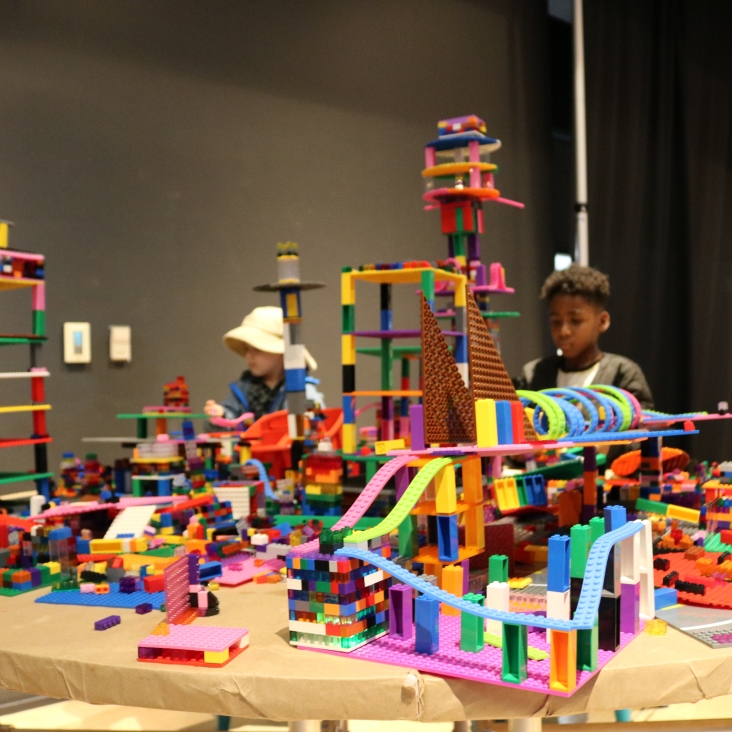
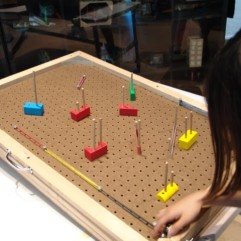
“Pegboard pinball is very open to all the kids and all the guests in how they want to build their pinball machine. A lot of them try to get the balls to the bottom in certain places or they just stick a bunch of blocks on and just start launching those things. A lot of the guests can end up spending a lot of time there, so they get really invested in their projects.”
— Allie Chen, Project Create Facilitator
“For marble machines, the reason it is here as more of a permanent station is because you can go a lot of different ways with it; every guest makes something completely different. It is very collaborate in the sense that when some leave and new guests come, they can start building off of what is already on the walls. This space gets everyone to work together.” — Allie Chen, Project Create Facilitator
“I liked the marbles because it was encouraging my son to try something, see how it worked, and then make adjustments.” — Stephanie, Chabot visitor

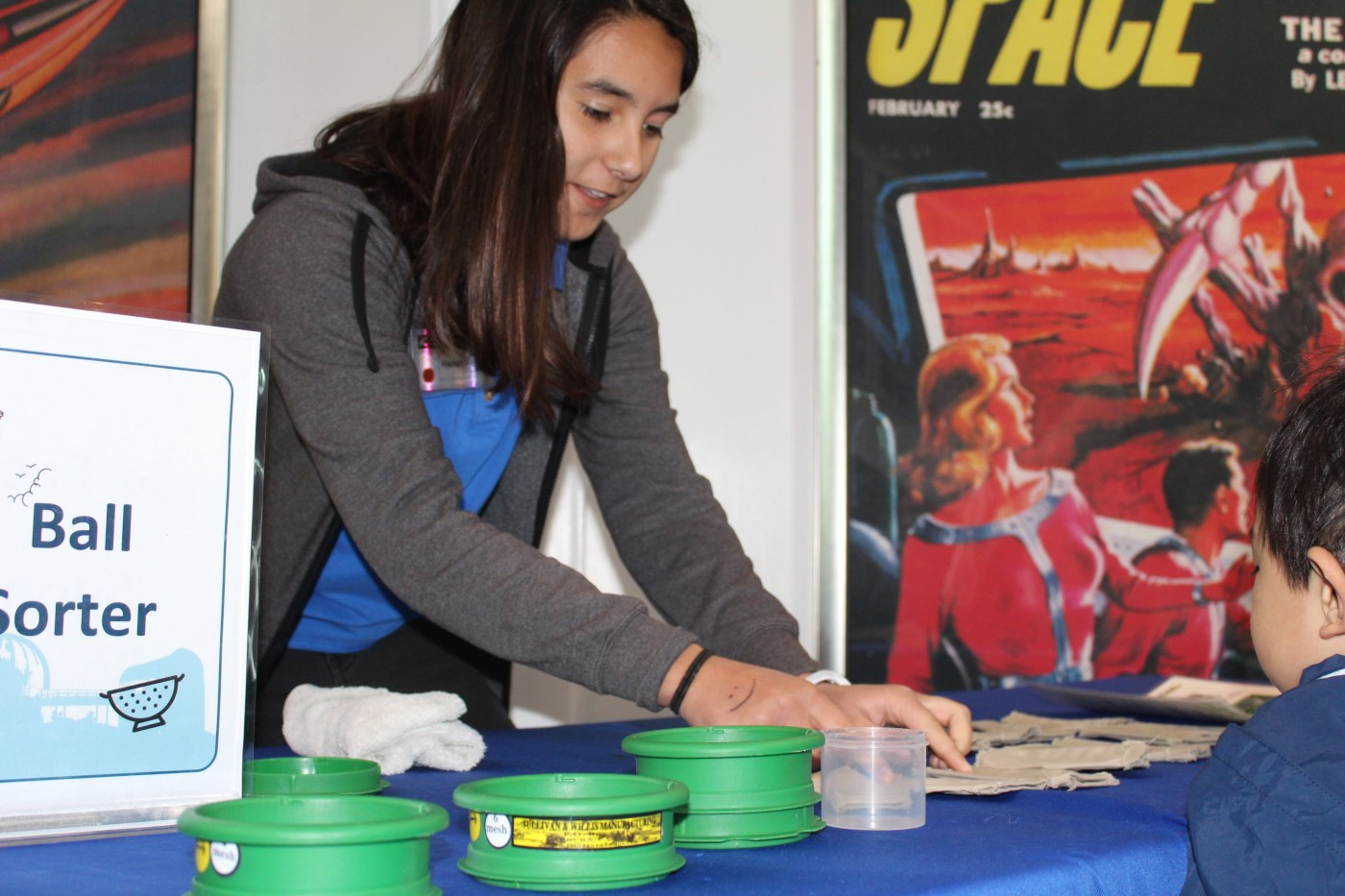
“I have always been interested in space and astrophysics, especially. I have also been involved in tutoring at my school, so the combination of teaching and learning science is really appealing.” –Hanako

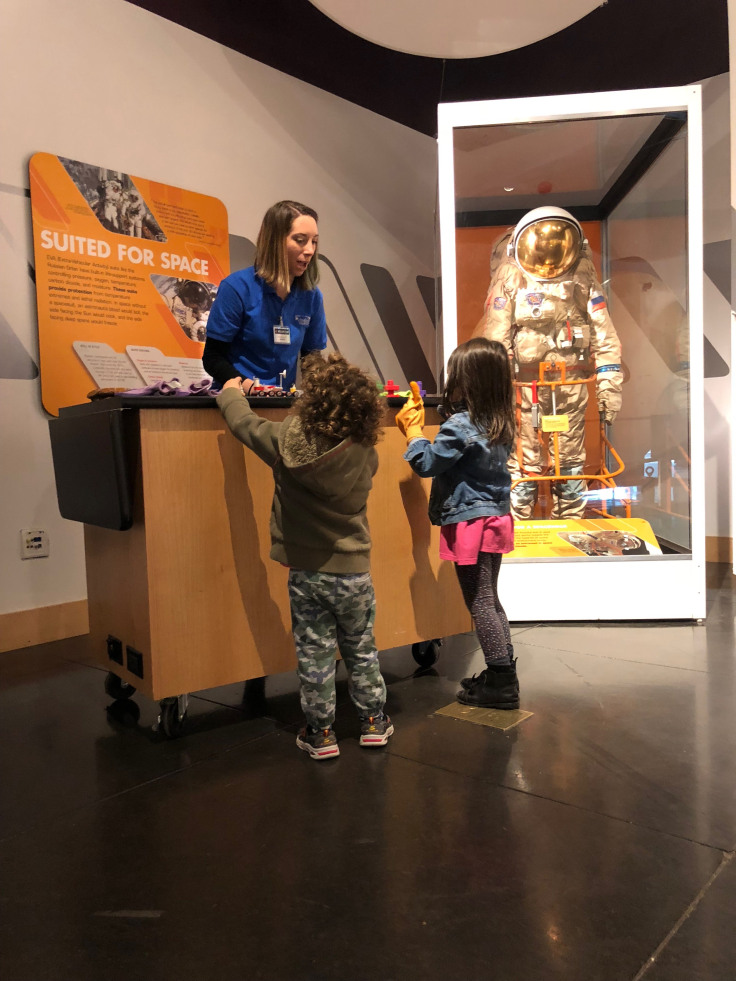
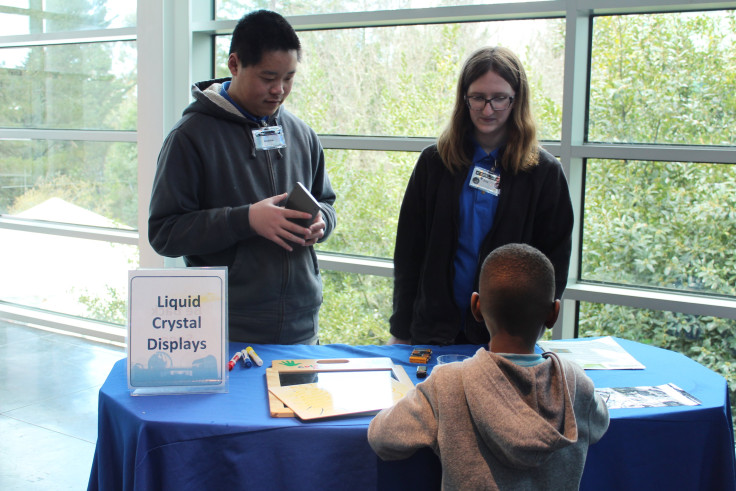
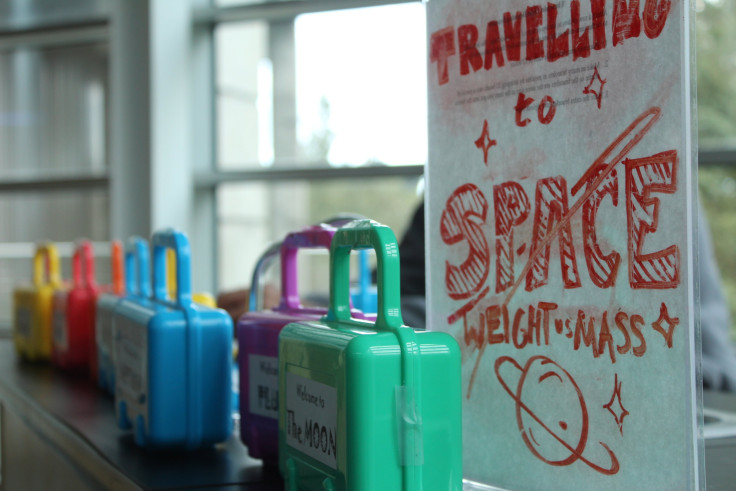
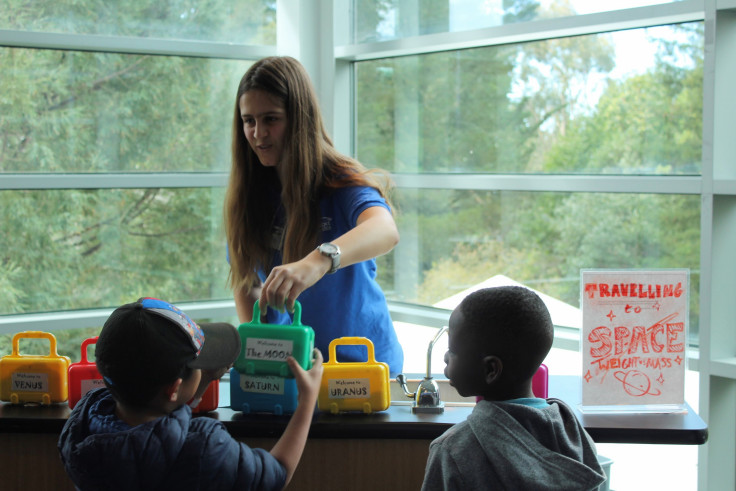

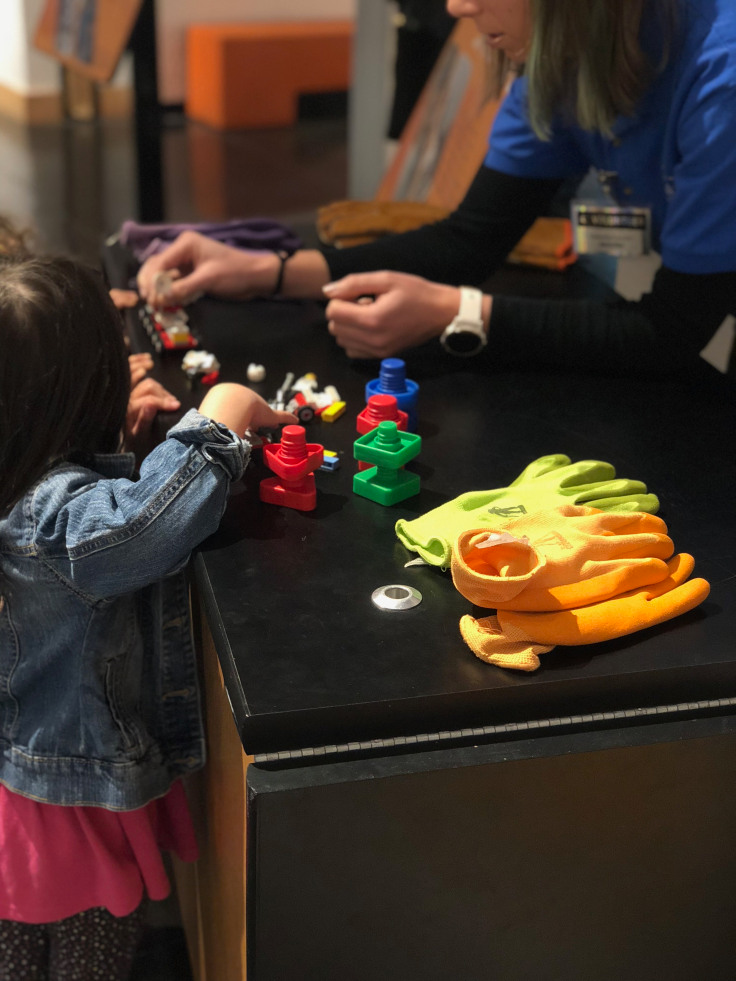
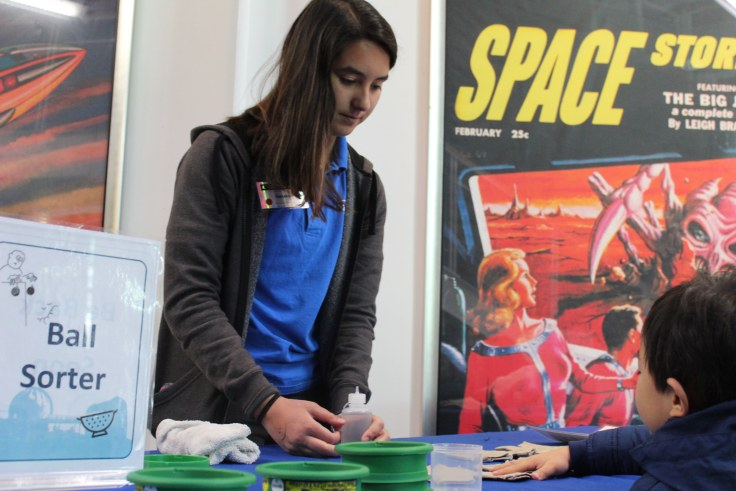


On New Year’s Eve, hundreds of kids and their parents gathered at Chabot to experience the annual Balloon Drop celebration. Kids counted down to the moment they would be surrounded by hundreds of balloons dropped from the ceiling. Families celebrated the New Year at 11 a.m., 1 p.m., and 4 p.m. as the clock struck midnight around the world.
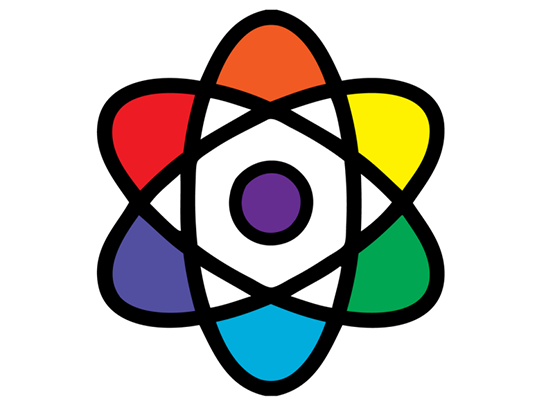
Sally Ride Club presents: a list of resources for young people in STEM! While some cater towards the LGBT+ and underrepresented groups, others are more general. LGBT and URM-specific programs are marked with an *asterisk. We recommend doing research into the programs to figure out if they’re right for you!
Stonewall Community Foundation Scholarship*
https://www.stonewallfoundation.org/scholarships
League Foundation Scholarship*
https://leaguefoundation.org/
Out to Innovate STEM LGBT Scholarship*
https://www.noglstp.org/scholarship-brochure.pdf
MUSE Mentorship for Underrepresented STEM Enthusiasts*
https://www.musementorship.com/
Queer Science Day Mentorship*
https://www.facebook.com/queerscience/
Out in Tech Mentorship*
https://outintech.com/mentorship/
O-STEM Mentorship*
https://www.ostem.org/page/mentorship-program
RSI – MIT’s Research Science Institute
https://www.cee.org/research-science-institute
SSP – Residential Program for Astronomy and Biochemistry
https://summerscience.org/
COSMOS – California Summer School for Mathematics and Science
https://cosmos.ucsc.edu/
YSPA – Yale Summer Program in Astrophysics
https://yspa.yale.edu/
MITES – MIT’s Minority Introduction to Engineering and Science*
https://oeop.mit.edu/programs/mites
MOSTEC – MIT Online Science, Technology, and Engineering Community
https://oeop.mit.edu/programs/mostec
RISE- BU’s Research in Science and Engineering
https://www.bu.edu/summer/high-school-programs
RMP/SRA – UCSB Summer Sessions
https://www.summer.ucsb.edu/pre-college/pre-college-programs
ATDP – UC Berkeley’s Academic Talent Development Program
https://atdp.berkeley.edu/
SUMaC – Stanford University Mathematics Camp
https://sumac.spcs.stanford.edu/
BWSI – Beaver Works Summer Institute
https://beaverworks.ll.mit.edu/CMS/bw/bwsi
YSP – UCD’s Young Scholars Program
https://education.ucdavis.edu/young-scholars-program
SPARC – Summer Program on Applied Rationality and Cognition
https://sparc-camp.org/
SAMS – CMU’s Summer Academy for Math and Science
https://www.cmu.edu/pre-college/academic-programs/sams.html
TexasTech’s Clark Scholars Program
http://www.depts.ttu.edu/honors/academicsandenrichment/affiliatedandhighschool/clarks
Ross Mathematics Program
https://rossprogram.org/
Simons Summer Research Program
https://www.stonybrook.edu/simons/
HSHSP – High School Honors Science, Math, and Engineering Program
https://education.msu.edu/hshsp/
SIP – UCSC’s Science Internship Program
http://ucsc-sip.org/
USC’s Young Researchers Program
https://www.youngresearchers.usc.edu/
CTY – Johns Hopkins’ Center for Talented Youth
https://cty.jhu.edu/
BMC – Berkeley Math Circles
https://mathcircle.berkeley.edu/


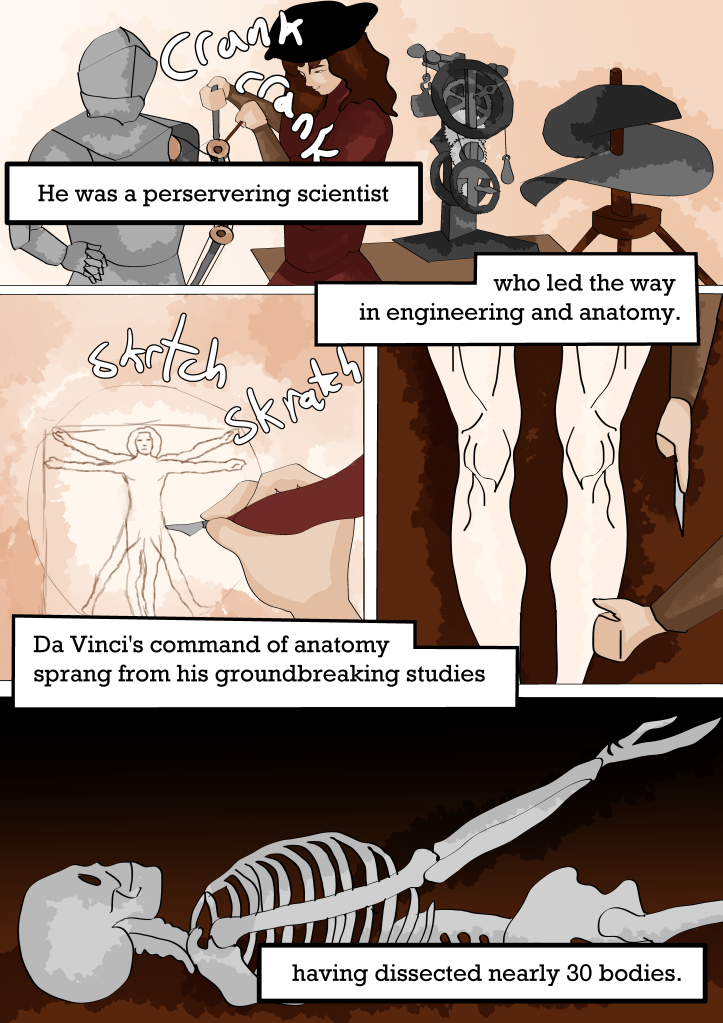
Illustrations by Anabel Loucks, written by Sally Ride Club.